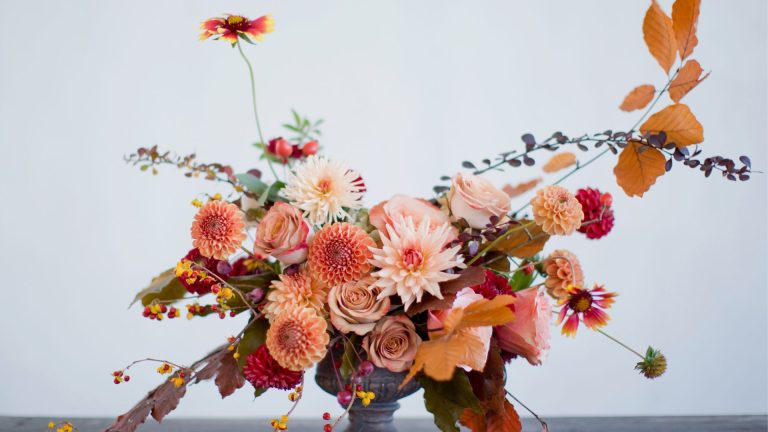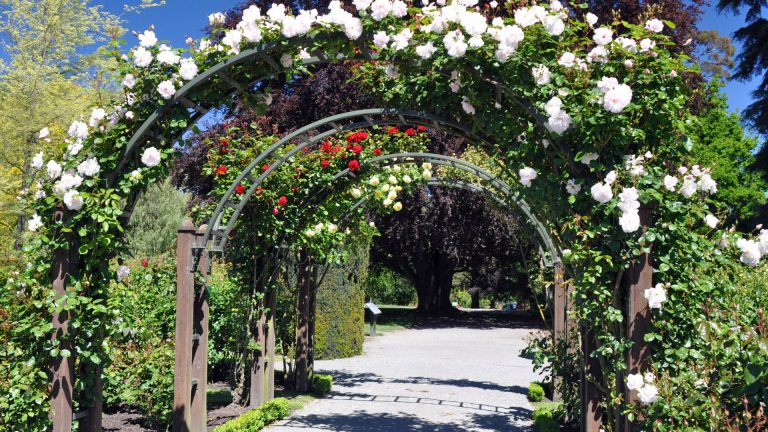Do It Yourself Fairy Garden
Imagine stepping into a world where tiny fairies flit among miniature flowers, small creatures frolic around enchanted cottages, and a magical ambiance fills the air. That’s the essence of a fairy garden! Whether you want to bring a touch of whimsy to your garden, or you’re looking for a fun DIY project, creating a fairy garden is a delightful way to spark your imagination and add a little magic to your outdoor space.
In this blog post, we’ll walk you through everything you need to know to create a beautiful, enchanting fairy garden, from selecting the right spot to adding the finishing touches. So, if you’re ready to create a miniature world of magic right in your own backyard, let’s dive into the art of building a fairy garden!
What Is a Fairy Garden?
A fairy garden is a miniature landscape that features tiny plants, whimsical decorations, and, of course, fairy figurines. It’s a space designed to mimic a natural environment where fairies, elves, and other mythical creatures might live. These gardens can be created outdoors or indoors and often include miniature elements like fairy houses, bridges, ponds, tiny furniture, and sparkling lights. It’s a perfect blend of gardening and imaginative play, making it an enjoyable project for people of all ages.
Fairy gardens come in all shapes and sizes. You can create one in a flower bed, a container, or even a small corner of your balcony. The beauty of a fairy garden is that you have complete creative freedom, so you can design it to match your personal style and preferences.

Step 1: Choose Your Location
The first step in creating a fairy garden is selecting the right location. Fairy gardens can be created in almost any space, but the location you choose will depend on the size of the garden and the plants you want to include. Here are some options to consider:
- Outdoor Fairy Garden: If you have a garden, you can dedicate a small corner or section of your yard to your fairy garden. Look for a spot that receives a good amount of sunlight and has well-draining soil. A location under a tree or near a flower bed can be perfect, as the natural elements will enhance the magical ambiance of the garden.
- Container Fairy Garden: If you don’t have much space or want a more portable option, a container garden is a great choice. You can use a large planter, a wooden crate, a wheelbarrow, or even an old teacup to create your miniature fairy garden. Containers are perfect for smaller spaces like patios, balconies, or even indoors.
- Indoor Fairy Garden: For those who live in an apartment or want to create a fairy garden inside, an indoor garden can be just as enchanting. Choose a small pot or tray, and place it on a windowsill or table where it will receive adequate light. Indoor fairy gardens can be as simple or as elaborate as you like.

Step 2: Choose a Theme
One of the most exciting parts of creating a fairy garden is deciding on the theme. Your theme will help guide your choice of plants, decorations, and fairy figurines. There are many themes to choose from, so feel free to let your imagination run wild! Here are a few ideas:
- Woodland Fairy Garden: This theme is inspired by forest settings, with moss, mushrooms, ferns, and other woodland plants. You can add tiny fairy houses made from bark, and include small logs, pebbles, and mini bridges to create a forest-like atmosphere.
- Flower Fairy Garden: Perfect for garden enthusiasts, this theme focuses on blooming flowers like pansies, daisies, and violets. Bright, colorful flowers will add beauty and life to your fairy garden, and you can add small garden tools, flowerpots, and little watering cans.
- Beach or Seaside Fairy Garden: If you live near the coast, why not bring a touch of the beach to your fairy garden? Use sand, seashells, and beach-inspired miniatures like tiny beach chairs and surfboards. Succulents and coastal plants will thrive in this setting.
- Whimsical Fairy Garden: For a more colorful and playful theme, consider a whimsical fairy garden. Use bright-colored flowers, fairy lights, and lots of miniatures such as tiny furniture, swings, and animals. Add a fairy village with tiny houses, winding paths, and a fountain.
- Fantasy Fairy Garden: If you enjoy a more fantastical approach, you can add elements like miniature castles, unicorns, and dragon figurines. This theme is great for creating a magical world that combines fairies with other mythical creatures.

Step 3: Gather Your Materials
Once you’ve decided on your theme and location, it’s time to gather the materials for your fairy garden. Here’s a list of what you’ll need:
- Container or Garden Bed: Depending on your choice of location, you’ll need a container for your fairy garden or a designated space in your garden. Containers come in all shapes and sizes, so pick one that fits your available space and aesthetic.
- Soil: High-quality potting soil is essential, especially if you’re working with a container. For garden beds, enrich the soil with compost or organic matter to ensure your plants thrive.
- Fairy Figurines: These are the heart of your garden. Choose fairies that match your theme, whether they’re sitting on mushrooms, reading books, or flying among the flowers. You can find fairy figurines at garden stores, craft shops, or online.
- Miniature Furniture and Decor: To make your fairy garden feel magical, you’ll need tiny items like benches, tiny birdhouses, fairy doors, mini watering cans, bridges, and other whimsical decorations. Look for pieces that match your theme and add charm to the scene.
- Plants and Flowers: Choose plants that suit the size of your fairy garden. For outdoor gardens, select plants that thrive in your climate and add a variety of textures and colors. Small plants like moss, ferns, succulents, and herbs are great choices for miniature gardens. For an indoor fairy garden, you can use small plants like baby tears, ivy, and miniature violets.
- Gravel, Stones, or Mulch: Adding gravel or small stones can create pathways or borders for your garden. You can also use mulch to help retain moisture in the soil and create a neat, finished look.
- Fairy Lights: For an extra touch of magic, consider adding tiny fairy lights to your garden. String lights or battery-operated LED lights can give your garden a soft, enchanting glow, especially in the evening.

Step 4: Arrange Your Fairy Garden
Now comes the fun part—arranging your fairy garden! Here’s a step-by-step guide to help you set everything up:
- Prepare the Space: If you’re using a container, fill it with potting soil, leaving about an inch from the top. For garden beds, clear away any weeds or debris and loosen the soil.
- Place Your Miniature Fairy House and Decorations: Start by placing the fairy house or homes in a central location. Surround it with small accessories, like tiny furniture, fairy doors, or little bridges. Make sure to leave enough space between the decorations so they don’t feel cramped.
- Add Your Plants: Arrange your plants in a way that mimics a natural landscape. Place taller plants in the back and shorter ones in the front for depth. If you’re using containers, try using a mix of small flowers, succulents, and ground cover plants to create a lush, full look.
- Create Pathways: Use small stones, gravel, or wood chips to create winding paths that lead from one part of your fairy garden to another. These pathways will give the garden a sense of movement and direction.
- Add Fairy Lights: String tiny fairy lights through the plants or hang them from miniature trees and bushes. Lights can really bring your garden to life and give it a magical glow at night.
- Finish with Details: The small details are what make your fairy garden truly special. Add tiny animals, butterflies, or birds. You can even add little fairy figurines to interact with the environment, like fairies sitting on benches, picking flowers, or flying around.

Step 5: Maintain Your Fairy Garden
Once your fairy garden is complete, it’s important to maintain it. Water your plants regularly, and make sure they receive enough sunlight. Prune any overgrown plants and replace any broken or weathered fairy figurines. For indoor fairy gardens, rotate the plants regularly to ensure they get even light exposure.
As the seasons change, consider updating your fairy garden to reflect new themes. Add seasonal decorations like mini pumpkins in the fall, or tiny snowflakes and Christmas lights in the winter.







